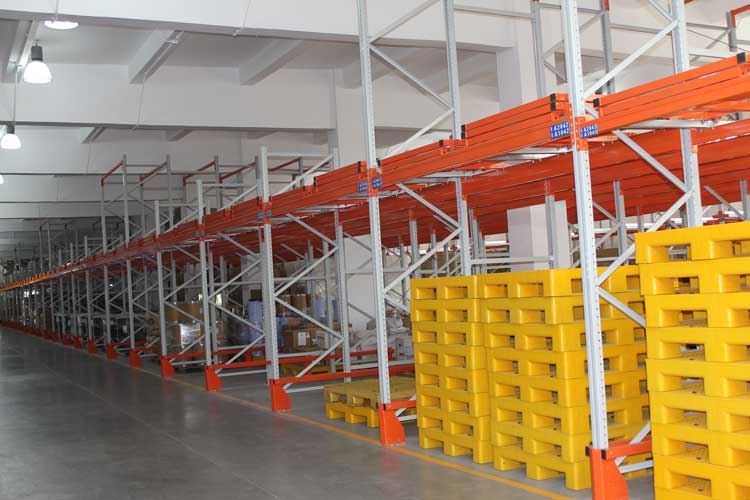Pushback racks evolved from pallet racks, also known as press-in racks or push-in racks. The pushback rack adopts the principle of combining rails and pallet trolleys. The rails have a certain slope (about 3°). Using the self-weight of the goods, the pallet goods are stipulated to be stored at one end, and the goods are first in and last out. It is suitable for large quantities and few varieties.
Goods storage, space utilization rate is very high, and access is more flexible and convenient. The total depth of the storage rack should not be too deep, generally within 6 pallet depths, otherwise, the space will be sacrificed due to the mutual embedding of the pallet trolleys. The weight of goods in a single pallet is generally within 1500kg, and the rack height is generally below 6m.

The pushback racking system has high requirements on the manufacturing accuracy of the storage racks, and the cooperation between the pallet trolley and the guide rail is particularly important. If the manufacturing and installation accuracy is not high, it will easily lead to poor operation of the storage racking system. This type of storage rack has a high cost and is very suitable for cold storage or occasions where the storage area is limited but the storage space needs to be increased urgently.
Features of pushback racking
1. Composed of typical structural parts such as pallet trolleys, the pallet trolley has flow characteristics, and the goods are stipulated to enter and exit at one end of the storage rack and follow the order of first-in-last-out.
2. When storing and transporting goods, the forklift is only located at the lower end of the rack aisle and does not need to enter the rack cargo storage aisle. This type of storage rack has the typical characteristics of high storage density and fast storage and transportation.
3. It is usually used in occasions where the storage space is extremely limited, but the storage capacity must be increased or there is a time requirement for the goods, such as occasions that do not have high requirements for goods picking.
Post time: 11-14-2022





